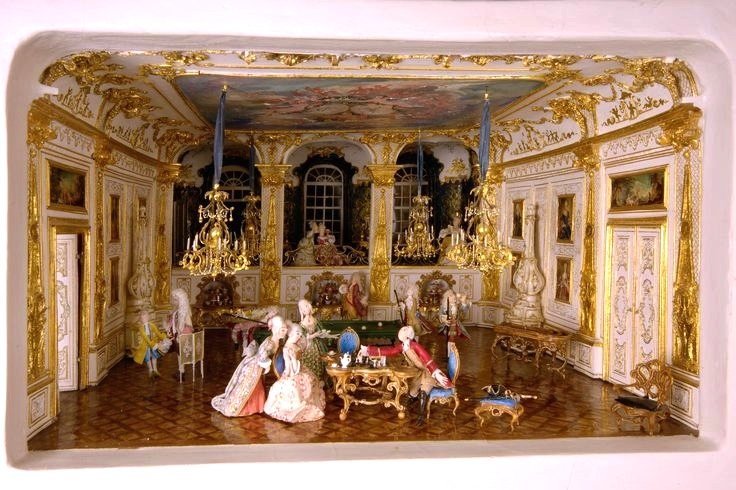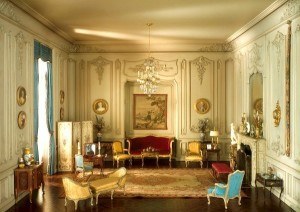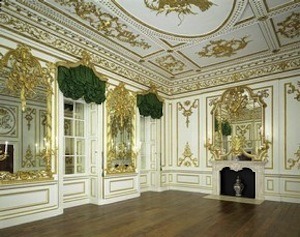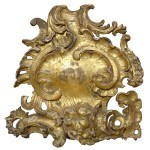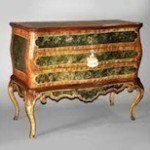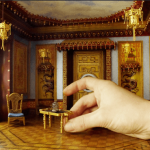The Rococo Style
Historical Context
There is no ambiguity about the rococo style. You love it! It’s elegant, witty, playful florid, graceful. Or you might find Rococo grotesque, over-blown, frivolous, a hodge-podge of swirls and bulges. It all began in 1715 when the five-year-old Louis XV ascended to the throne in France, with the Duc d’Orléans appointed as Regent. The Duke had no hopes of becoming King and spent the 8 years of his Regency thoroughly enjoying himself. The aristocracy followed his lead in a passion for beautiful things, and an imagination that often veered to the bizarre. The French upper-class of the mid-18th century is entirely responsible for the outrageous style of art and design known as Rococo.
The Rules
There were no rules, unless you consider “form before function” a design principle. The main impact of Rococo was on interior decorating, furniture and objets d’art, rather than on architecture. It was characterized by asymmetrical design, delicate curving forms, pastel colors (mainly blue, green and pink) and plenty of decorative details and accessories. Walls were covered with silk fabrics and decorated with gold moldings, paintings, and mirrors.
Design Elements
Asymmetry – this is one of the main differences from Baroque style, which was a systematized design with rigid rules. If you look at Rococo ornaments, one half of the design never matches the other half. Through the use of asymmetry, designers sought to achieve lightness and airiness of the decoration, creating a playful and carefree mood. Numerous swirls, scrolls, and floral designs whimsically curve, twist and intertwine.
Rocaille – a popular motif for decoration, and the namesake of Rococo. Rocaille is an image of shells, usually carved on stone, which was originally used for decorating the entrances of grottoes. Later the word Rocaille was applied for every shell-like, rock-like or elaborate scroll ornament. This motif was used as a decorative pattern for furniture, wall carvings, and accessories.
Scrolls – S and C shaped, were inherited from the Baroque. However, in Rococo, these ornaments are usually placed asymmetrically. In Baroque, the Cs would face each, the openings lined up lined-up exactly. In Rococo, the Cs would be askew, off-balanced, giving the element a whimsical look. Scrolls were also used in furniture design. For example, legs of chairs and tables of that period took on the shape of a shallow S.
Elaborate carvings – usually made from wood and covered with gold leaf or painted white. They decorate walls, ceilings, pieces of furniture and accessories. In comparison to Baroque, carvings in Rococo style have more filigree forms.
Pictorial Scenes – pastoral plots. battle scenes, trophy images and formal portraits of the Baroque period were replaced with frivolous and intimate pastoral scenes, peopled by humans and mythological characters. They often depicted hunting scenes and leisure outings with erotic images of aristocrats at play.
Furniture – new types of furniture appeared, such as canapé, secretaire, bergere chair and tables for different purposes: playing cards, dressing tables, etc. Furniture became lighter and more elegant. Attention was paid to accessories and art objects. During that period Europe started to produce porcelain. Aquariums became popular.
Dollhouse Baroque, Rococo & Chinoiserie
The Baroque style began in Italy and quickly spread to the rest of Europe. Characterized by luxury, drama and ornate detail, the style had rigid rules which kept the form “pure.” It gave way to the no-rules Rococo style which kept many of the same elements but used them in an asymmetric manner. Increased trade with the Far East during the reign of George IV, exposed Europeans to the mythical beasts and monstrous plants of Asian art, giving the world the style known as Chinoiserie.
Theoretically, you could use all three styles in the same dollhouse or room box – theoretically. But a word of caution. If you try to combine these styles, pick one era as the main theme, then add individual pieces from the other eras as accent items.
I hope this article helps you get more enjoyment out of what would have to be a colorful project.
Susan Downing, with Patrick Owens


